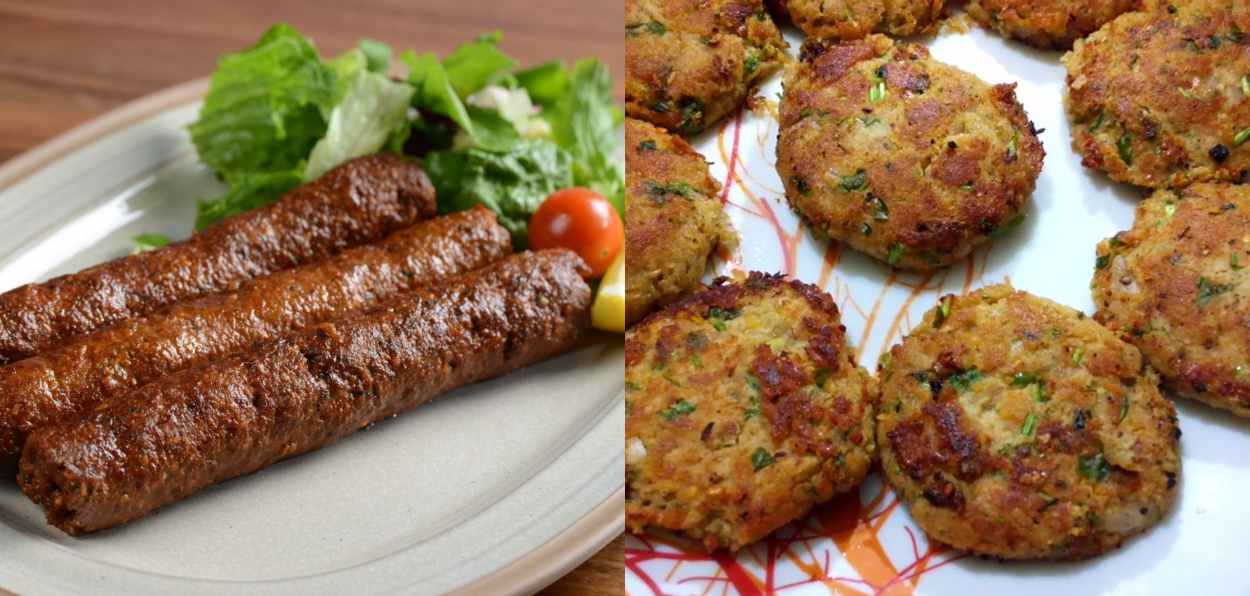
Naved Qaisar Shah
Rampur was a Muslim state founded in 1774 AD. The Nawabs came from the Roh region of Afghanistan and meat was their favorite food. The majority of people in Rampur were also Muslim, so all the food culture that evolved was based on meat. The Kebabs held a special position in the Rampur cuisine and it continues to be an important and sought-after dish even today. The people of Rampur are mild-mannered and moderate in their thoughts and so is their food.
Master Imtiaz Ali Khandara was my colleague at the Rampur Raza Library. He traced his ancestry to Tansen, the greatest musician and one of the nine Ratanas or nobles in Akbar's court. Imtiaz often said that food is eaten first with the eyes, followed by the nose, and finally from the mouth. Its presentation entices the eyes; the olfactory senses swallow its fragrance before it is judged by the tastebuds. All these elements are taken care of in full measure in the Rampur cuisine.
Rampur's Seekh Kebab can challenge any other seekh kebab. This kebab is unique in its texture, size, taste and most of all, its aroma. As the kebabs are being roasted on the embers, the atmosphere is filled with its fragrance. It is a complete food and a starter for a multi-course meal too. Some say that the fragrance of these kebabs is a starter in itself!
This kebab is always made with fresh spices and one can taste these in every bite of the succulent kebabs.
These days the cooks add oil or in a little more quantity than it was originally used and it’s, probably, the influence of political and social culture of the neighbouring Delhi. It is said that the Rampuri kebab reflects all the ups and downs, the chaos, and uncertainties of the political and social milieu. The kebab is fragile.
Lucknow's kebab has a sweet flavouring agent added to it while Rampur's Seekh kebab tastes something in between the Delhi and Lucknowi Kakori Kebabs.
In the era of the internet and social media, any popular dish of a place can be tried and posted on YouTube with a different name by just anyone. The Rampuri kebab may look like just another kebab but its uniqueness is in its taste. Social media has made Rampuri kebabs as famous as the Rampuri Knife and Rampuri Topi! However, while naming a cap or a knife can be an innocuous act, giving the Rampur tag to a kebab needs to be carefully checked.
Many unauthentic versions of kebabs can be found on social media. In this situation, the foodies must use discretion while trying anything of that sort posted on the Internet.
There was a time when Kings used to gift their special chefs to each other i.e., food from one place used to travel with them to another place. However, in those times, such food was beyond the reach of the common man and was only meant for the table of Raja and Maharajas.
Spices such as clove, cardamom, black pepper, cumin, garlic, ginger yellow pepper, and besan (chickpea flour), color, raw papaya paste, etc. are used in the recipe.
Unlike many other kebabs, the Rampur seekh kebabs do not have a certain amount of fat. Strong spices like nutmeg and mace are used in it. This kebab is five to six inches long and two to three centimeters in thickness. It’s grilled on the flame of the charcoal till peaks are formed on its surface. Ghee is usually used on it once it is ready but Rampurites equally prefer to eat the dry kebabs.
Shami kebabs of Rampur are more often cooked at the homes of the locals. Ladies of the house can make these quickly. Like Lucknow's Tunde Kebabs, Galawti Kebabs, or Gulati Kebabs, the Shami kebabs are the specialty of Rampur. These rounded and flattened kebabs are neither fragile nor so subtle in taste. It’s made from dry mutton - lamb or beef, gram dal, garlic, onions, red chili powder, and salt boiled together and then ground into a dine past. To this, the cook adds chopped green chili, coriander, garam masala (spices), and crushed onions. This is mixed well and then the concoction is turned into small flattened cutlets by by hand and shallow fried in oil of ghee. Again, as the crust turns dark and brown these are done. These kebabs are eaten with Rampur's tawa chapatti. The kebabs give the taste of roasted meat.
I saw my mother deep frying seekh kebabs in a frying pan in our childhood. That version of seekh kebab is also an old recipe from Rampur which is rarely made these days. The fried version tastes slightly different.
Kachche gosht ke kebab or the raw meat kebabs of Rampur are also called ‘kachchi tikkiyan.’ In other places, these kebabs are called chapli kebabs. However, the Rampur ones taste quite different.
For this, the cook uses dry raw meat of lamb and mixes all the ingredients and flavouring agents in it. Then these are turned into round tikkis and deep fried and garnished with green coriander and green chilies. In Rampur, it is eaten with chapati roti.
Another special dish of Rampur is Talwan kofte, from the kebabs family. In it, the meatball is made of lamb or beef, to which is added spices, ginger, garlic, roasted gram, and browned and fried onions. All these ingredients are crushed into a fine paste. The meatball prepared thus is fried. In a separate pan, the browned onions and cardamom are added to the oil to which fried kofta are added. In this, the cook uses more quantity of raw papaya for softness.
ALSO READ: Coffee is a gift from Sufi Baba Budan to Indians
This kebab which can also be called a kofta is very soft. This has to be cooked in heavy-bottomed copper utensils.
